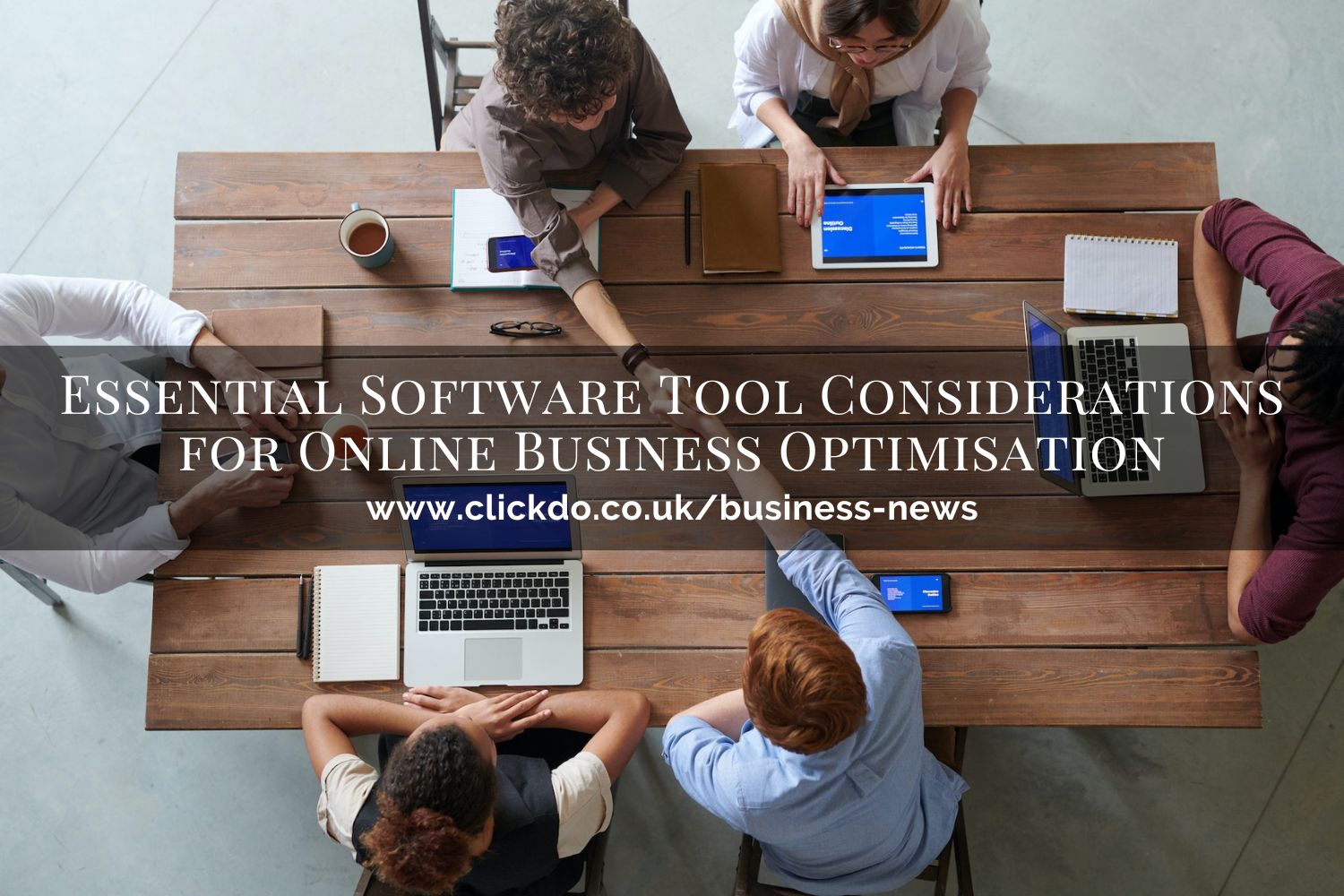
4 Essential Software Tool Considerations for Online Business Optimisation
Table of Contents
As the online market continues to grow, businesses must have a significant online presence that is up to date with advances in technology.
Now, regarding online business optimisation, there are a few essential software tools to consider.
The first thing required is a reliable customer relationship management (CRM) system. This will help you keep track of customer data, such as contact information, purchase history, and user preferences. It can also be used to automate marketing campaigns and sales processes.
Additionally, an analytics platform is essential for understanding user behaviour and tracking key performance indicators (KPIs). This will help to identify areas for improvement and make informed decisions about optimising your business.
Finally, a content management system (CMS) is necessary for creating and managing website content. A CMS allows you to easily create pages, posts, and other types of content without coding from scratch.
With such essential software tools in place, you’ll be well on your way to optimising your online business for success. But with so many available, what should you consider before settling for one?
1. How to choose software that meets your business requirements

When choosing software for your business, it’s essential to consider your organisation’s specific needs. Start by making a list of all the features and capabilities that you need from the software. This will help you narrow down your options and ensure you’re selecting a product that meets all your requirements.
Once you have a list of potential software solutions, thoroughly research each. Read reviews from other users to understand how well the software works in practice. You should also look into customer support options, as this can be invaluable if you ever run into any issues with the software.
Additionally, consider the cost of the software, if there are incentives such as voucher codes being offered to purchase the product, and whether or not it fits within your budget. Finally, ensure that the software is compatible with any existing hardware or systems you may already have in place.
By taking these steps, you can ensure that you choose a software solution that meets all your business requirements.
2. How to choose the right software provider for your business
The first thing you should do when choosing a software provider is to look at their track record. How long have they been in business? What kind of customer reviews do they have? Do they have any awards or certifications that demonstrate their commitment to quality?
It’s also important to consider the features and capabilities of the software. Does it meet all your needs? Is it easy to use and understand? Are there any customisation options available?
Moreover, you should look into the cost of the software. Is it within your budget? Are there any hidden fees or additional costs associated with using the software?
Finally, ensure you can get reliable customer support from the provider if needed. Ask about their response times and availability to know you can get help when needed.
3. How to compare different types of software tool security protocols

When it comes to software tool security protocols, a few different types can be compared.
The most common type is the authentication protocol, which requires users to provide credentials such as a username and password to access the system. This type of protocol is designed to ensure that only authorised users can gain access to the system.
Another type of protocol is the encryption protocol, which scrambles data so that unauthorised individuals cannot read it. This protocol type is often used for sensitive data such as financial information or medical records.
Finally, the authorisation protocol determines what actions a user can take within the system. This type of protocol ensures that users can only perform certain tasks and cannot access other areas of the system without permission.
Comparing these different software tool security protocols enables organisations to determine which best meets their needs and provides the highest level of protection for their data and systems.
4. How to implement the latest cybersecurity best practices for your software tool access points
When implementing the latest cybersecurity best practices for your software tool access points, you should take a few key steps.
- Ensure that all your access points are properly secured with strong passwords and two-factor authentication. This will help protect against unauthorised access and ensure that only authorised users can gain access to the system and your business data.
- Consider using encryption technology to protect any sensitive data stored on the system. This will help prevent any malicious actors from accessing or stealing this data.
- You should regularly monitor your system for any suspicious activity or potential security breaches. If any suspicious activity is detected, it’s essential to take immediate action to address the issue and prevent further damage from occurring.
By taking these steps, you can ensure that your software tool access points remain secure and protected from potential cyber threats.
With the essential software tools covered in the article in place, your online business will be optimised for success.
Author Profile
- Online Media & PR Strategist
- Blogger and Educator by Passion | Contributor to many Business Blogs in the United Kingdom | Fascinated to Write Blogs in News & Education I have completed a journalism summer course at the London School of Journalism and manage various blogs.
Latest entries
 FinanceApril 18, 2024Exploring Cryptocurrency and Bitcoin as Payment Options in Business
FinanceApril 18, 2024Exploring Cryptocurrency and Bitcoin as Payment Options in Business BusinessApril 16, 20245 Essentials for Your Online Business in the UK
BusinessApril 16, 20245 Essentials for Your Online Business in the UK BusinessApril 5, 2024Overcoming Export Challenges: A Guide for Businesses relying on international Trade
BusinessApril 5, 2024Overcoming Export Challenges: A Guide for Businesses relying on international Trade BusinessMarch 28, 2024Startup Success: 4 Key Steps to Register Your Business
BusinessMarch 28, 2024Startup Success: 4 Key Steps to Register Your Business

